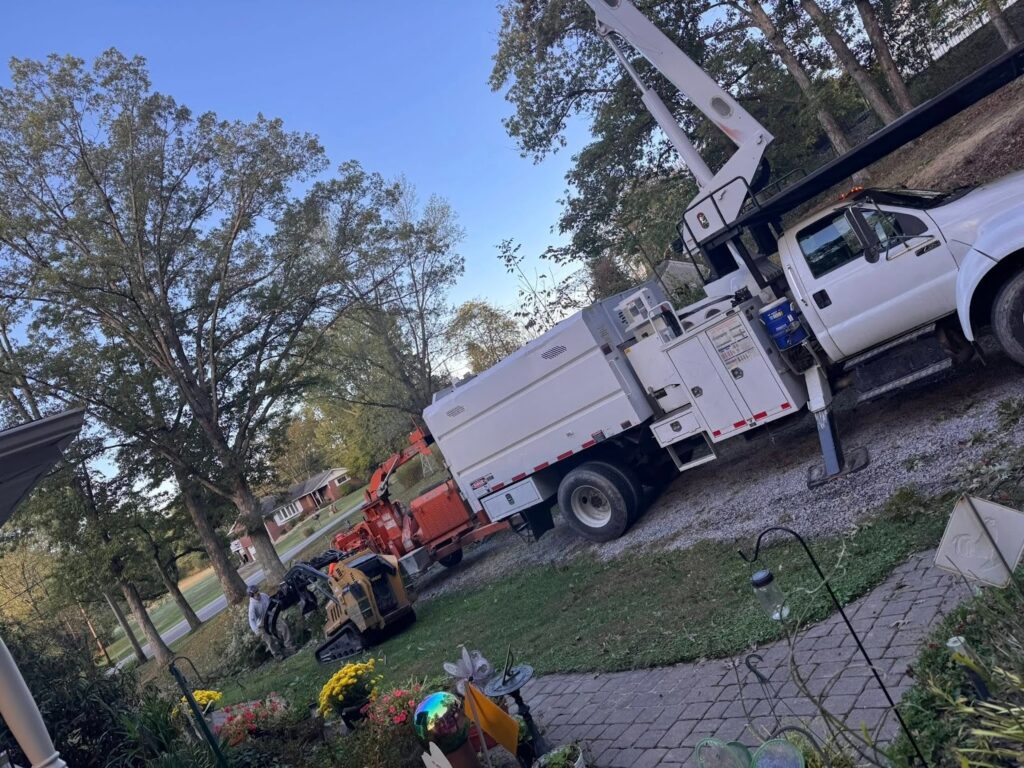Choosing the right tree service means checking insurance and certifications first. You should verify their local experience and read recent customer reviews. Get a detailed written estimate, ask about cleanup guarantees, and request references from jobs they’ve completed nearby.
Read on to learn how to protect your property, save money, and avoid costly mistakes when selecting a tree removal service.
What to Consider When Hiring A Tree Removal Company?
Tree removal often goes through a complex process in Plum. The weather is often harsh, and trees are overgrown, which may require permits. Here is how you can find the right company:
Verify Credentials and Insurance
Insurance protects your property from damage and covers worker injuries. Without proper coverage, you become liable for accidents that happen on your land.
How to Verify Insurance of a Tree Company?
- Request a certificate of insurance
- Check general liability coverage
- Confirm workers’ compensation policy
- Verify coverage amounts listed
- Call insurance company directly
- Ask for recent documentation
Get Multiple Written Estimates
Comparing quotes helps you spot fair pricing and identify companies that might cut corners. Different estimates reveal what services are actually necessary.
What Should be Included in an Estimate?
- Detailed work scope description
- Tree size and species
- Removal method planned
- Cleanup and disposal
- Stump grinding costs
- Timeline for completion
- Total price breakdown
- Payment terms outlined
Clarify the Scope of Work
Misunderstandings about what’s included lead to surprise charges and arguments. Some companies remove trees but leave stumps, logs, or debris behind. Others include a complete cleanup in their base price. Knowing exactly what happens—from cutting to final cleanup—prevents frustration when the job finishes.
Check Reputation and Experience
Local reputation reveals how companies treat customers and handle problems. Years of experience indicate they know how to manage different tree issues safely.
How to Measure the Reputation of A Tree Service?
- Read Google reviews carefully
- Check Better Business Bureau
- Ask neighbors for feedback
- View recent customer photos
- Request local job references
- Search social media mentions
Discuss Equipment and Safety
Professional equipment prevents property damage and keeps workers safe. Companies with modern tools finish jobs faster and handle difficult removals that cheap operators can’t manage.
What Tools Are Needed to Remove A Tree?
Arborists use different tools while removing a tree efficiently, such as:
- Chainsaws and pole saws
- Bucket trucks or lifts
- Heavy-duty wood chippers
- Stump grinding machines
- Ropes and rigging equipment
- Ground protection mats
- Safety gear and harnesses
Prioritize Hiring A Local Service
Local tree service understands native tree species and common problems like oak wilt and storm damage. They respond faster to emergencies because they’re nearby. Their reputation depends on keeping neighbors happy, so they do better work. Local crews know the area’s soil conditions and weather patterns that affect tree health.
What Mistakes to Avoid When Hiring A Tree Removal Service?
You also need to be aware of some mistakes homeowners make when hiring a tree removing service. This will help you stay away from inexperienced services. Read carefully:
- Price Only: Don’t hire the cheapest company without checking their credentials. Low prices often mean no insurance, poor equipment, or inexperienced crews.
- Skipping Insurance: Never assume a company has proper coverage without seeing proof. You’re liable for injuries and damage if they lack insurance.
- Verbal Estimates: Avoid companies that won’t provide written quotes with detailed work descriptions. Verbal agreements lead to disputes about what was promised.
- Unlicensed Workers: Don’t hire operators without certifications or proper training for tree removal. Amateurs cause property damage and dangerous situations.
- Cleanup Assumptions: Never assume debris removal is included in the base price. Many companies charge extra for hauling away logs, branches, and wood chips.






